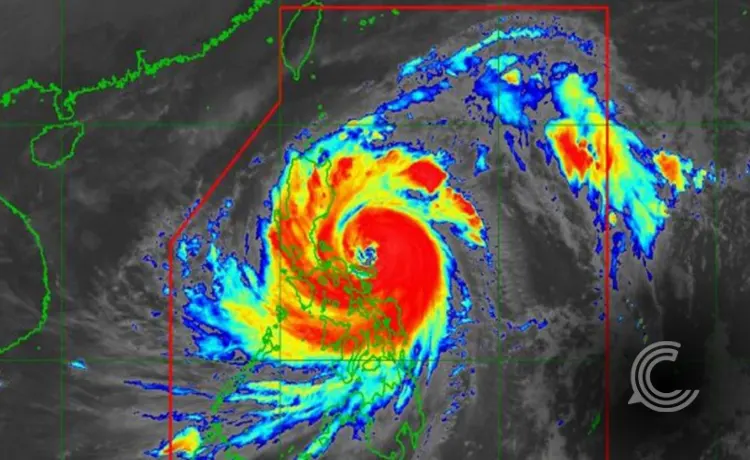Super Typhoon Fung-wong Devastation: 2 Dead, 1 Million Evacuated in Northern Philippines

Key Points:
- Super Typhoon Fung-wong typhoon has tragically resulted in at least two confirmed fatalities, with rescue and damage assessment operations ongoing across affected regions
- Over one million people were preemptively evacuated from villages vulnerable to flooding, landslides, and storm surges, highlighting the scale of the immediate risk
- Fung-wong, which made landfall as a Super Typhoon with formidable winds, caused power outages, blocked major roads, and damaged approximately 1,000 homes in its path
The Philippines is currently grappling with the severe impact of Super Typhoon Fung-wong (locally named Uwan), which slammed into the northeastern coast of the main island of Luzon. This powerful storm is the latest in a series of intense weather disturbances to strike the archipelago, compounding an already critical humanitarian situation.
Super Typhoon Strikes Luzon
Super Typhoon Fung-wong made landfall in Dinalungan town, Aurora province, on Sunday night, bringing with it sustained winds of up to 185 kilometers per hour (115 mph) and maximum gusts reaching 230 kph (143 mph). The storm’s sheer size and intensity were significant factors in the decision for widespread, early evacuation efforts, Reuters reported.
The typhoon’s massive rain and wind band, covering an area of approximately 1,800 kilometers (1,118 miles) wide, posed a threat to nearly two-thirds of the country. This included the densely populated Metro Manila region, though the storm later tracked northwest toward Taiwan.
The Immediate Human Cost
Tragically, the immediate impact of the storm included loss of life. Officials confirmed two deaths due to the severe weather. One fatality was a villager who drowned in flash floods in the eastern province of Catanduanes. The second reported death was a woman in Catbalogan City in eastern Samar province, who died after being pinned by debris when her house collapsed.
Reported by The Associated Press, a disaster-mitigation officer for Catanduanes, Roberto Monterola, described the conditions, stating, “The rain and wind were so strong there was nearly zero visibility.” This highlights the extreme danger faced by residents and rescue personnel during the storm’s peak.
Pre-emptive Evacuation and Emergency Response
The critical measure of pre-emptive evacuation proved essential in limiting a higher casualty count. Government and civil defense agencies successfully moved more than a million people from high-risk coastal and low-lying communities into emergency shelters or the homes of relatives.
More than 318,000 individuals remained in evacuation centers as of Monday, according to officials from the Office of Civil Defense. This unprecedented scale of evacuation reflects lessons learned from previous disasters and the heightened threat level associated with Fung-wong’s “super typhoon” classification.
Compounding a National Crisis
Typhoon Fung-wong’s arrival compounded a humanitarian crisis still unfolding from a previous, devastating storm. The country was already reeling from the effects of Typhoon Kalmaegi, which had struck earlier in the week, leaving a confirmed death toll of at least 224 people in central island provinces before continuing on to pummel Vietnam.
Philippine President Ferdinand Marcos Jr. declared a state of emergency due to the extensive devastation caused by Kalmaegi and the expected calamity from Fung-wong. This declaration helps government agencies expedite the mobilization of relief resources and emergency funds to the affected areas.
Infrastructure and Aftermath
The infrastructure damage has been extensive. Fierce wind and rain caused flooding in at least 132 northern villages. Preliminary damage assessments indicated that about 1,000 houses were damaged. Additionally, numerous landslides and downed electrical posts have rendered roads impassable, isolating some remote communities.
As the typhoon moves away from the northwestern Philippines, attention shifts to rescue, relief, and recovery operations. Bernardo Rafaelito Alejandro IV of the Office of Civil Defense emphasized the ongoing threat, saying, “While the typhoon has passed, its rains still pose a danger in certain areas” in northern Luzon. Authorities have mobilized personnel to clear roads and provide assistance to those whose homes were damaged.
The Philippines, located in the Pacific typhoon belt, is hit by an average of 20 typhoons and storms annually, a factor that continuously stresses its infrastructure and resource management capabilities. The scale of the Typhoon Fung-wong devastation highlights the ongoing challenge of climate resilience for the island nation.



